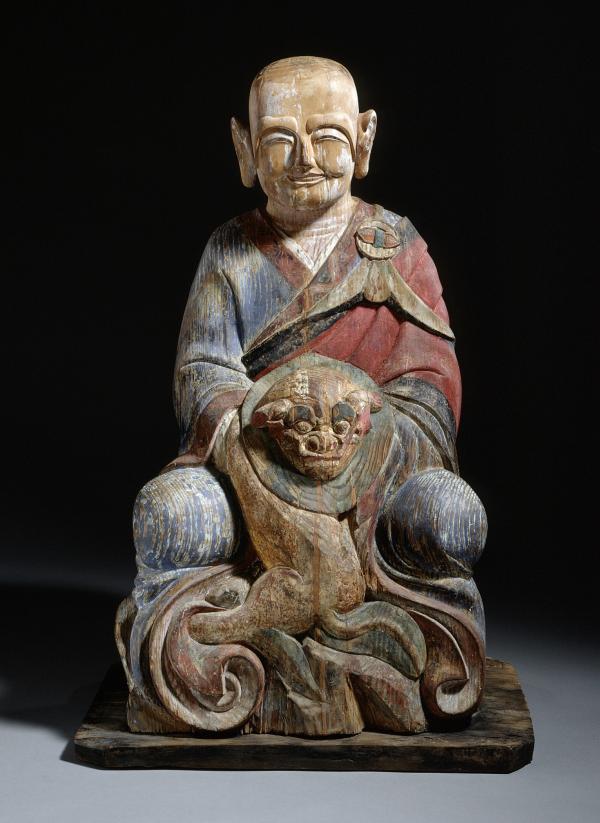This sculpture depicts an arhat, or nahan in Korean. Produced in the late Joseon period, it shows Bhadra (Palt'ara) seated on a stylized rock-shaped perch on a rectangular pedestal, holding a tiger and smiling. Arhat, meaning "one who is worthy," is used to describe a transcendent person, one who has completed the path to nirvana. The Buddha asked arhats to remain in the world to propagate Buddhist law (dharma), to protect and benefit the common beings, and extend human lives. Traditionally, the arhats are depicted in groups of 16, 18, or 500 and are worshipped that way.
Browse LACMA's collection of art depicting arhats, ranging from South and Southeast Asian Art to Korean Art, and visit Seated Arhat (Nahan), Probably Bhadra (Palt'ara) with a Tiger in the Korean art galleries, Hammer Building, Level 2.



